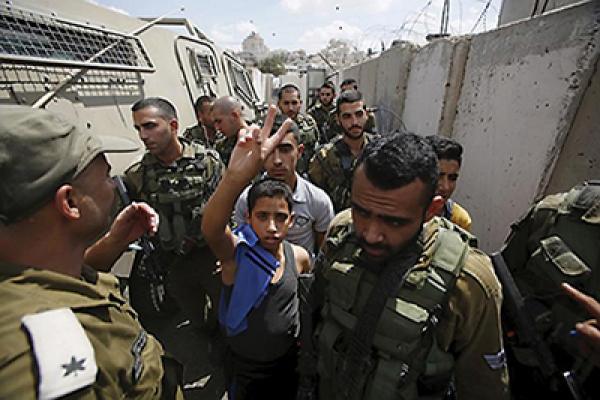THE IMAGE OF Palestinian teenagers pulling out knives and attempting to stab heavily armed, flak-jacketed Israeli soldiers—or civilians, right in front of the soldiers—serves as a sad metaphor for Israel-Palestine these days. The desperation, the futility, the massive disproportionality of firepower—it’s all there.
Of course, what really happened in recent violent incidents is subject to contentious dispute, as is so much else in the region. Take, for instance, a mid-October clash in East Jerusalem. The Israeli police gave their version of events: Border police officers confronted a Palestinian man, who pulled a knife and tried to stab them. They fired at him to “neutralize” the attack, and he died of his injuries.
The Palestinian News and Information Agency’s version added significant details: The “man” killed by Israeli soldiers was actually a 16-year-old named Muta’az Owaisat, and the agency reported that the police quickly imposed a military cordon to keep journalists from the scene, near an “illegal Israeli settlement.” The report added, “Earlier Saturday, an 18-year-old Palestinian ... was shot by an Israeli setter in central Hebron, in the southern Western Bank, where he was left to die by Israeli soldiers who prevented paramedics from administering medical assistance to him.”
An anecdote in The Washington Post illustrated the senselessness of the violence: “As an atmosphere of fear and vengeance spread, a young Jewish Israeli stalked an Ikea parking lot in Kiryat Ata, a town in northern Israel, apparently looking for Arabs to attack,” the Post reported. “He repeatedly stabbed a man who turned out to be Jewish himself.”
A lot of ink is spent explaining what “caused” these latest outbreaks—it’s usually summarized as Israel’s attempts to restrict Palestinians from entering the area of East Jerusalem that houses the al-Aqsa Mosque (and the Temple Mount). But in some ways, looking for a single precipitating cause misses the point. Sometimes, such eruptions are simply a case of a people saying, “I’m not going to take this anymore.”
Read the Full Article

